#meditationtechniques
Text
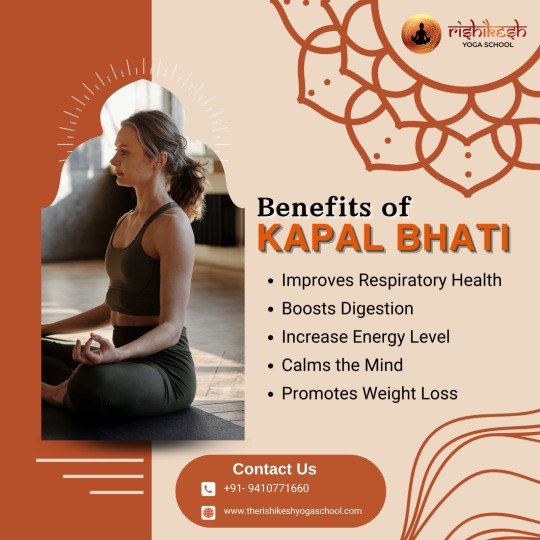
🌿✨ Embrace the Power of Kapal Bhati! ✨🌿
Ready to unlock your inner energy and boost your overall well-being? Kapal Bhati, a powerful pranayama technique, offers many benefits that can transform your health and vitality! 🌟
𝐂𝐨𝐧𝐭𝐚𝐜𝐭 𝐮𝐬 𝐟𝐨𝐫 𝐦𝐨𝐫𝐞 𝐝𝐞𝐭𝐚𝐢𝐥𝐬:
✉️𝐄𝐦𝐚𝐢𝐥 𝐈𝐃: [email protected]
📞𝐂𝐚𝐥𝐥/𝐖𝐡𝐚𝐭𝐬𝐀𝐩𝐩: +91-9410771660
#yoga#rishikeshyogaschool#kapalbhati#yogainrishikesh#yogateachertraining#meditationinspiration#meditation#yogajourney#meditationtechniques#yogapose
0 notes
Text

🧘♀️ With Yoga Tribex, improve your overall health! 🌟
Dive into the countless benefits of asanas – from increased flexibility and strength to improved posture and mental clarity. Discover the transformative power of asanas and unlock your fullest potential.
Join us today!
#yoga#yogaasanas#yogaytribex#yogateachertraininprogram#asana#yogateacher#yogaJourney#meditationtechniques#yogalife#yogapose
0 notes
Photo

What is Meditation? Part II: Explore Different Types of Meditation, … https://rntozen.com/blog/meditate/what-are-some-different-types-of-meditation/?utm_source=tumblr&utm_medium=RN+To+Zen+Social+Media&utm_campaign=RN+To+Zen+Posts
#GuidedMeditation#MeditationTechniques#MeditationTypes#MindfulnessMeditation#TranscendentalMeditation
0 notes
Text
A Beginner's Guide to Meditation"
Where should You meditate?
When it comes to meditation, the possibilities are endless. Whether you’re in a cozy chair, seated on the floor, or nestled in bed, the key is to create a space that supports your mental well-being. However, not all meditation environments are created equal.
While the allure of meditating in bed may be tempting, it’s important to recognize the pitfalls of this…
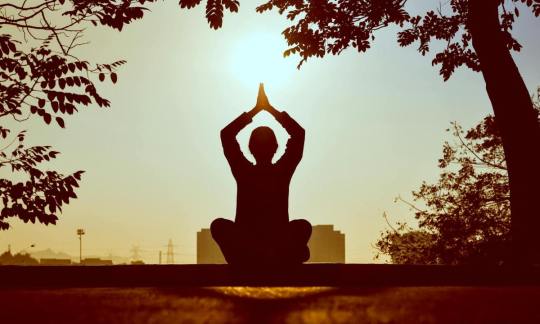
View On WordPress
#DailyPractice#InnerCalm#MeditationTechniques#MentalClarity#MindBodyConnection#MindfulLiving#MindfulnessJourney#SerenityGuide#StressRelief#WellnessHabits
1 note
·
View note
Text
What Does Meditation Do?

Meditation is a practice that has been around for thousands of years, and its benefits are widely recognized. But what exactly does meditation do? How does it affect our bodies, our minds, and our overall health? In this blog post, we will explore the science behind meditation, its benefits, and how you can incorporate it into your daily life.
Introduction to Meditation
Definition of Meditation
Meditation is a practice where an individual uses a technique – such as mindfulness, or focusing the mind on a particular object, thought, or activity – to train attention and awareness, and achieve a mentally clear and emotionally calm and stable state. It's a way to connect with your inner self and achieve a sense of peace and balance.
Brief History of Meditation Practices
Meditation practices date back thousands of years. They were initially meant to deepen understanding of the sacred and mystical forces of life. Over time, they evolved into a range of practices aimed at promoting relaxation, stress reduction, and the development of compassion, love, patience, generosity, and forgiveness. Today, meditation is commonly used for relaxation and stress reduction.

Photo by Avery Arwood on Pexels
Health Benefits of Meditation
Reduction of Stress
One of the primary reasons people turn to meditation is stress reduction. Meditation can produce a deep state of relaxation and a tranquil mind, which can help reduce stress levels.
Lowering cortisol levels
Meditation has been shown to reduce levels of the stress hormone cortisol. High cortisol levels can lead to harmful effects on the body, including inflammation, insomnia, and depression. By reducing cortisol levels, meditation can help to alleviate these conditions.
Improving stress-related conditions
Stress can exacerbate many health conditions, including heart disease, diabetes, and mental health disorders. Meditation can help manage these conditions by reducing the body's stress response.
Control of Anxiety
Regular meditation can also help reduce symptoms of anxiety disorders, including panic attacks, social anxiety, obsessive-compulsive disorder, and phobias. It can also help you to develop coping mechanisms to manage your anxiety.
Decreasing symptoms of anxiety disorders
By focusing on the present moment and not allowing the mind to dwell on the unchangeable past or undetermined future, meditation can help reduce symptoms of anxiety.
Enhancing resilience to stress
Meditation can also increase your resilience to stress, making you less likely to be affected by anxiety-provoking situations.
Promotion of Emotional Health
Meditation can lead to an improved self-image and a more positive outlook on life, which can greatly enhance your emotional health.
Elevating mood
By reducing stress and anxiety, meditation can improve your mood and overall disposition. Regular meditation can even lead to an increase in happiness.
Reducing symptoms of depression
By generating a state of relaxation, meditation can help reduce symptoms of depression, such as feelings of hopelessness and sadness.
Improvement of Physical Well-being
Meditation can also have numerous benefits for your physical health, including lowering blood pressure and supporting immune system function.
Lowering blood pressure
Meditation can lead to physical changes in the body that can help lower blood pressure. This can reduce the strain on your heart and arteries, helping prevent heart disease.
Supporting immune system function
By reducing stress and promoting relaxation, meditation can boost your immune system, making you more resistant to diseases and illnesses.
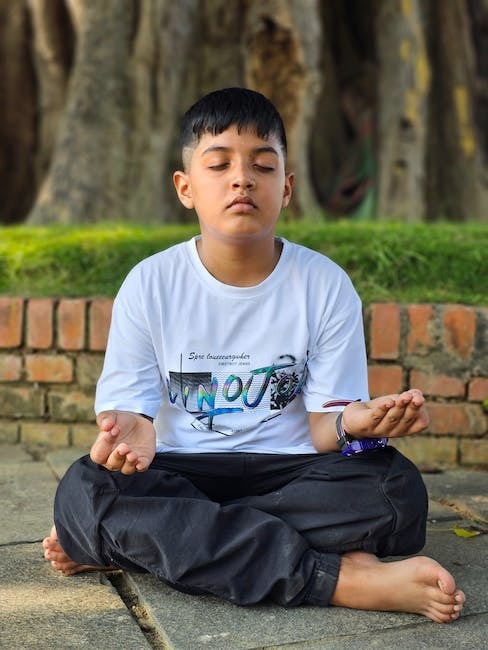
Photo by CP Khanal on Pexels
Cognitive and Psychological Effects
Enhancing Self-awareness
Meditation can help you develop a stronger understanding of yourself, helping you grow into your best self. It can also increase your mindfulness, which can help you stay focused on the present and not get caught up in negative thought patterns.
Building a stronger understanding of self
Through meditation, you can gain a better understanding of your own identity and your place in the world. This can lead to greater self-confidence and a more positive outlook on life.
Increasing mindfulness
Mindfulness is a state of being fully present and engaged in the current moment. Meditation can help increase your mindfulness, leading to improvements in all areas of your life.
Lengthening Attention Span
Meditation can also help improve your attention span and focus. It can help you stay focused on tasks for longer periods and improve your performance in a variety of tasks.
Improving concentration
One of the main benefits of meditation is improved concentration. By training your mind to focus on one thing at a time, you can improve your ability to concentrate.
Reducing mind-wandering
Mind-wandering can be a major source of stress and anxiety. Meditation can help reduce mind-wandering and keep your mind focused on the present.
Potential to Change the Brain
Research has shown that meditation can actually change the structure of the brain, leading to improvements in memory, sense of self, and empathy.
Neuroplasticity and meditation
Neuroplasticity is the brain's ability to change and adapt as a result of experience. Meditation can promote neuroplasticity, leading to improvements in brain function and mental health.
Changes in brain regions associated with memory, sense of self, and empathy
Studies have shown that meditation can lead to changes in brain regions associated with memory, sense of self, and empathy. This can lead to improvements in these areas, enhancing your overall quality of life.

Photo by SuGuna Photos on Pexels
Meditation Techniques and Practices
Types of Meditation
There are many different types of meditation, each with its own focus and techniques. Some of the most common types include mindfulness meditation, concentration meditation, and loving-kindness meditation.
Mindfulness meditation
Mindfulness meditation involves focusing on your breath and bringing your mind's attention to the present without drifting into concerns about the past or future.
Concentration meditation
Concentration meditation involves focusing on a single point. This could involve following the breath, repeating a single word or mantra, staring at a candle flame, listening to a repetitive gong, or counting beads on a mala.
Loving-kindness meditation
Loving-kindness meditation is a method of developing compassion. It involves mentally sending goodwill, kindness, and warmth toward others by silently repeating a series of mantras.
Elements of Meditation
Regardless of the type of meditation you choose, the practice involves the same basic elements.
Focused attention
Focusing your attention is generally one of the most important elements of meditation. Focusing your attention is what helps free your mind from the many distractions that cause stress and worry. You can focus your attention on such things as a specific object, an image, a mantra, or even your breathing.
Relaxed breathing
This technique involves deep, even-paced breathing using the diaphragm muscle to expand your lungs. The purpose is to slow your breathing, take in more oxygen, and reduce the use of shoulder, neck, and upper chest muscles while breathing so you breathe more efficiently.
A quiet setting
If you're a beginner, practicing meditation may be easier if you're in a quiet spot with few distractions, including no television, radios, or cellphones.
A comfortable position
You can practice meditation whether you're sitting, lying down, walking, or in other positions or activities. Just try to be comfortable so that you can get the most out of your meditation practice.
Open attitude
Let thoughts pass through your mind without judgment. Don't dwell on the past or anticipate the future; just focus on the present.

Photo by Avery Arwood on Pexels
Incorporating Meditation into Daily Life
Starting a Meditation Practice
Starting a meditation practice doesn't have to be overwhelming or require a special location or equipment. Here are some tips to get you started.
Finding time for meditation
You can meditate at any time of the day that works for you. However, many people find that meditating in the morning helps them start their day with a sense of calm and focus.
Creating a conducive environment
Find a quiet, comfortable space where you won't be disturbed. This could be a dedicated room in your home, or even a quiet spot in your garden or local park.
Building Meditation Skills
Like any skill, meditation requires practice to achieve satisfying results. Here are some tips to help you build your meditation skills.
Gradually increasing duration
Start with just a few minutes of meditation each day, and gradually increase the duration as your skills improve.
Using guided meditation resources
There are many resources available to help you learn to meditate. These include books, apps, and online videos and courses. You can also attend a class or workshop to learn from a skilled instructor.
Everyday Ways to Practice Meditation
You don't have to set aside dedicated time for meditation. There are many ways to incorporate mindfulness into your everyday activities.
Mindful eating
Pay attention to the taste, texture, and aroma of your food. Eat slowly and savor each bite. This can help you enjoy your food more and prevent overeating.
Walking meditation
Focus on each step, the sensation of your feet touching the ground, the rhythm of your breath while walking, and the feeling of wind against your face.
Integrating mindfulness into routine activities
Try to bring mindfulness to the activities you do every day, such as washing dishes, brushing your teeth, or commuting to work. This can help you stay present and focused, no matter what you're doing.
In conclusion, meditation is a powerful tool that can help reduce stress, improve mental and physical health, and enhance overall quality of life. By incorporating meditation into your daily routine, you can reap these benefits and more. So why not give it a try?
For more information on meditation and its benefits, check out our other articles on Types of Meditation, The Power of Meditation, and Benefits of Regular Meditation Practice.
And remember, it's never too late to start meditating. So why not start today?
#Meditation Science #Meditation Research #Meditation Benefits #Effective Meditation #Meditation Techniques
Source: Mayo Clinic, Healthline, Harvard Health
Frequently Asked Questions About Meditation
What is meditation?Meditation is a mental practice that involves focusing the mind on a particular object, thought, or activity to train attention and awareness and achieve a mentally clear emotionally calm, and stable state. It has been practiced for thousands of years and is a part of many religious traditions and beliefs, but it can also be done as a secular practice for its well-being benefits.
How does meditation affect the brain?Meditation has been found to produce changes in various areas of the brain. Studies using MRI scans have shown that meditation can increase the gray matter density in parts of the brain related to memory, sense of self, empathy, and stress. It can also alter brainwave patterns, promoting relaxation and potentially enhancing cognitive performance over time.
Can meditation reduce stress?Yes, one of the most well-established benefits of meditation is stress reduction. Regular meditation practice has been shown to decrease the production of stress hormones, such as cortisol, and promote a relaxation response in the body. This can lead to reduced feelings of stress and anxiety, and improve overall well-being.
Is meditation helpful for anxiety and depression?Meditation can be a useful tool for managing symptoms of anxiety and depression. Mindfulness meditation, in particular, helps individuals become more aware of their thoughts and feelings without becoming overwhelmed by them. This can reduce the impact of negative thought patterns and improve mood.
What are the different types of meditation?There are many types of meditation, each with its own unique focus and techniques. Some of the most popular include Mindfulness Meditation, which emphasizes present-moment awareness; Transcendental Meditation, which uses a mantra or repeated phrase; and Loving-Kindness Meditation, which focuses on developing feelings of compassion and love towards oneself and others.
How long should I meditate for?The ideal duration for meditation can vary from person to person. Beginners might start with just a few minutes a day and gradually increase the time as they become more comfortable with the practice. Many experienced practitioners aim for 20-30 minutes per session, but even short periods of meditation can be beneficial.
Do I need a teacher to meditate?While a teacher can provide guidance and help refine your meditation practice, it is not strictly necessary to have one. There are many resources available, such as books, online courses, and apps, that can help you get started and progress in your meditation journey. However, a teacher can offer personalized advice and support, especially when dealing with specific challenges.
Can meditation improve physical health?Meditation has been linked to a variety of physical health benefits. It can help lower blood pressure, reduce chronic pain, improve sleep, and even support the immune system. These benefits are thought to be related to the stress-reducing effects of meditation, as chronic stress can negatively impact physical health.
Is it normal for my mind to wander during meditation?It is completely normal for the mind to wander during meditation. The practice is not about stopping thoughts but rather noticing when your attention has drifted and gently bringing it back to your focus point. With time and practice, you may find that your mind wanders less frequently.
What is the best time of day to meditate?There is no one "best" time to meditate—it largely depends on your personal schedule and preferences. Some people find that meditating first thing in the morning helps set a positive tone for the day, while others prefer to meditate in the evening as a way to unwind. Experiment with different times to see what works best for you.
Read the full article
0 notes
Text
#innerpeace#meditation#mindfulness#wellness#yogapractice#mentalhealth#innovation#Meditation#Mindfulness#InnerPeace#StressReduction#MeditationTips#BeginnersGuide#MeditationTechniques#MindfulLiving#Relaxation#PersonalGrowth#Wellbeing#Selfawareness#MeditationPractice#MeditationBenefits#FindingCalm#MeditationAdvice#MindBodyConnection#MindfulHabits#StressManagement#MeditationCommunity
0 notes
Text
Psychological Causes of Fear
Fear often originates from a multitude of psychological factors, including:
Past Trauma: Experiences of past trauma or negative events can leave deep emotional scars. The fear of reliving such events can lead to ongoing anxiety and fear.
Perception of Threat: Fear arises when we perceive something as a threat to our well-being or safety. Our brain is wired to detect and respond to potential dangers.
Conditioning: Over time, we can become conditioned to fear specific stimuli or situations. For instance, if you were stung by a bee as a child, you may develop a lifelong fear of bees.
Cognitive Biases: Cognitive biases, like catastrophizing or overgeneralization, can amplify our fears by distorting our perception of reality. These biases can make us believe the worst-case scenarios are more likely than they truly are.
Social and Cultural Influences: Societal norms and cultural influences play a significant role in shaping our fears. What is deemed "scary" or "risky" can be strongly influenced by our surroundings.
Anxiety Disorders: Specific anxiety disorders, such as generalized anxiety disorder, social anxiety disorder, or specific phobias, can intensify and prolong feelings of fear.
For the complete article, Please Visit:-
#MeditationForFear#OvercomingFear#MindfulnessMeditation#AnxietyRelief#MeditationTechniques#FearManagement#EmotionalWellBeing#ConquerFear#InnerPeace#StressReduction#MentalHealth#PositiveMindset#PersonalGrowth#SelfImprovement#MindBodyBalance#Meditation#StressRelief#Anxiety#Depression#Mindfulness#Relaxation#SelfCare#StressManagement#MindBodyConnection#CalmMind#Focus#Resilience#MentalClarity#Wellness#MentalStrength
0 notes
Text
CAN CONSCIOUSNESS MANIFEST AS THOUGHTS ? MY VIEW WITH A DIFFERENCE
One need to understand consciousness first. There is two type of consciousness, one normal consciousness which every human being have. It uses logic, reasoning, subjective knowledge and imagination to understand things and thus becomes conscious of that subject.
A normal Consciousness can manifest as thought when we think on the consequences of it in form of many questions.
The questions like would it be positive or negative, then what, when, how, where, why are some more questions which helps in manifestation of our thoughts.
For example : A native want to go to his friend's house and he heard that they have a dog in their home and the dog attack at strangers if the friend's family don't stop it from doing so.
NOW THIS IS A CONCIOUSNESS FOR THE NATIVE ABOUT THE DOG' S BEHAVIOUR. Now the native is thinking if the dog bites then he need to take injections.
Now the native is thinking that how painful will be those injections. Thinking about it the native started manifestation of the thoughts that it would be very painful visit to his friend's home as dog bite can be very nasty. He even thought that the dog can give deep wound with lots of bleeding.
THIS KIND OF CONCIOUSNESS IS NORMAL WHICH EVERY HUMAN BEING HAVE and does manifestation of the thoughts pertaining to the consciousness of that event or subject.
REAL CONCIOUSNESS IS DIFFERENT AND IT IS NOT FOUND WITH ALL HUMAN BEING. IT IS RARELY FOUND IN HUMAN BEINGS. Mainly found with the saints, gurus, sadhu, yogi purush etc.
REAL CONCIOUSNESS IS LIKE AWAKENING AND ONE CAN ACHIEVE IT ONLY THRU SPIRITUAL PRACTICE UNDER THE GUIDANCE OF AN EXPERT GURU.
A PERSON WITH REAL CONCIOUSNESS WILL NEVER HAVE MANIFESTATION OF THOUGHT AND IT IS DUE TO HIS CONCIOUSNESS.
He will always remain neutral with no thoughts AS MANIFESTATION HAVE NO PLACE IN HIS CONCIOUS STATE.
CONCIOUSNESS IS A STATE IN WHICH A PERSON KNOWS EVERYTHING ABOUT EVERYTHING AND ITS TRUE AND TRUTH.
MANIFESTATION IS A STATE OF MIND WHERE WE MANUFACTURE OUR THOUGHTS with our logics and imaginations And that can be unreal also.
A man with real consciousness need not have manifested thoughts as he knows the reality.
So in a nutshell a real consciousness will not manifest as thoughts.

#conciousness manifestation#conciousness#conciousness mansfest thoughts#meditationpractice#meditationtechniques#vedic astrology
0 notes
Text
How to meditate 100 properly

This manual offers thorough instructions on performing meditation properly and attaining mindfulness.
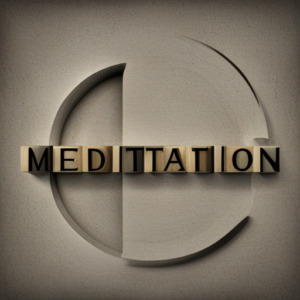
HOW TO MEDITATE 100 PROPERLY
Meditation, an ancient discipline, offers quiet refuge in chaos and uncertainty. With this manual, you will be able to start practicing mindfulness. The correct meditation methods are the main topic.
This article explains how to meditate properly for beginners.
This article gives a general overview of meditation's core ideas. It will go through the meaning of meditation, its advantages, and a few standard meditation practices.
People have used meditation for ages to improve relaxation, focus, and self-awareness. Teaching your mind to focus and guide your thoughts in a certain way is crucial. The idea is to comprehend your feelings and opinions without judgment. A patient, loving, empathic attitude toward oneself and others might be the outcome of being in a state of conscious awareness.
A good practice of meditation depends on maintaining the proper posture. A calm and comfortable body makes it easier for the mind to concentrate on the here and now, thanks to good posture. Additionally, it aids in avoiding bodily aches and pains that could interfere with meditation.
The physical and mental components of meditation are both crucial.
A comfortable posture prevents physical discomfort and maintains concentration while training. Whether you sit on a cushion or a chair or lie down to meditate, it is crucial to keep your back straight. You'll be able to breathe deeply and deliberately as a result.
When meditating, paying attention to a single thing or concept, such as your breath, a mantra, or visualization, is essential. You can also accept your ideas by observing them without attachment or judgment.
To acquire mental clarity and peace during meditation, one must practice concentrating their attention on a specific object, idea, or activity. Reviews are vital since they may either detract from or help with meditation.
During meditation, the mind frequently wanders. Take notice of and examine these ideas rather than trying to suppress them. Watch how they appear, last for a time, and then gradually vanish. The definition of attentive awareness is the act of watching without making any judgments.
One can employ these techniques or tactics to influence or control one's thoughts.
During meditation, paying attention to your breath may be a helpful approach for controlling your thoughts. Pay attention to the sensation of air entering and leaving your body. You may utilize this simple activity as a point of reference to help you stay focused and attentive during meditation by practicing it.
Please provide us with additional background or details about what you want to know about beginner's meditation. It would be beneficial to determine what you are interested in studying because there are several different meditational practices and approaches.
This article offers instructions on how to start meditating. It advises locating a calm and cozy setting, picking a meditation strategy that works for you, and creating a regular meditation routine.
Meditation may initially seem intimidating, but this is only sometimes the case. Set aside a little time every day to practice meditation. Find a quiet, pleasant spot to concentrate on your job without being disturbed. You may gradually lengthen your meditation sessions as you practice more.
Training the mind to concentrate and reach a state of peace and relaxation is the practice of meditation.
For newcomers, some are brand-new to a field and can pick up and use any number of approaches. Practicing mindful breathing is a simple way to start. You must focus on your breathing when using this method. Without attempting to change it in any way, pay attention to every breath you take. Doing this action may help focus your attention on the present moment and calm your mind.
This essay covers the telltale indications and best practices for effective meditation. It offers guidance on whether you meditate correctly and suggestions for enhancing your technique.
There are a few indications that you are meditating correctly. First and foremost, while practicing meditation, you should feel peaceful and comfortable. Over time, you could also experience less tension and worry.
Beginners frequently question how to tell if they are meditating correctly. You can feel at ease and relaxed when you meditate successfully. Additionally, you can feel detached from your thoughts and have an increased awareness of the present. It is crucial to remember that everyone's experience with meditation will be different.
Our physical and mental health may gain a lot from meditation.
However, there are several commonplace mistakes that people need to make when meditating to avoid impeding their growth. Here are a few of them, along with advice on how to prevent them: 1. Looking for quick outcomes: The practice of meditation calls for endurance and
One of the most frequent errors individuals make when meditating is getting annoyed when their mind wanders or attempting to control their thoughts. The goal of meditation is to comprehend your ideas without passing judgment on them, not to clear your mind completely. Recognize when your thoughts wander and gently bring them back to your breathing.
This article offers a thorough explanation of the seven steps of meditation.

HOW TO MEDITATE 100 PROPERLY
Getting ready for meditation is the first stage in the process.
You should choose a quiet, comfortable space where you won't be disturbed to begin meditating. Making space in your house exclusively for meditation is one of your options. You may adorn it with items that give you a tranquil and comfortable feeling.
Taking the proper stance is step two.
Maintaining a correct posture is crucial when you sit, lie down, or even walk when you meditate. It's vital to keep calm and relaxed while remaining attentive and observant.
Learning and using various breathing exercises is step three of meditation.
These methods can aid in relaxation, concentration, and stress reduction and are crucial to meditation. Your ability to manage your breathing can help you relax your body and mind. Meditation places a strong emphasis on breathing. You may maintain your awareness of the current moment by focusing on breathing. Without attempting to control or change your breathing pattern, concentrate on the sensation of the air moving into and out of your body.
The development of conscious awareness and attention is the primary goal of step 4.
It entails focusing on the current moment while being uninhibited and mindful of your environment, thoughts, and feelings. By engaging in attentive awareness and concentration, you
Being attentive entails being conscious of your feelings and ideas without judging or condemning them and observing the development of thoughts and emotions when meditating is frequent. Watch your senses as if you were an objective observer to prevent getting overcome by them.
You will learn how to deal with potential distractions in Step 5.
Distractions are a regular occurrence during meditation. There will always be distractions, whether from outside noises, discomfort in the body, or racing thoughts. It's crucial to resist being upset by distractions to retain attention during meditation. Recognize the distraction instead, then slowly bring your focus back to breathing.
Step 6 requires regular practice.
When it comes to meditating, consistency is essential. Include meditation in your everyday routine, even if it's just for a short while. As you practice meditation more frequently, it gets easier to stick with it, positively impacting other areas of your life.
Step 7 asks you to consider your meditation experience.
You were thinking back on your meditation experiences after each session is a good idea. Think back on any feelings or ideas that came up throughout your practice, and then take a minute to realize how you are feeling right now. Reflecting on your thoughts and emotions might provide insight into your inner reality.
This post discusses improving your meditation skills by experimenting with different methods.
Try out several techniques as soon as you feel at ease with meditation. Numerous meditation techniques, including mindfulness and loving-kindness meditation, have specific benefits.
The best way for people to learn and practice meditation techniques is through seminars and retreats. These gatherings give participants an organized setting to increase their comprehension of meditation and its advantages. Workshops usually concentrate on particular facets of meditation, including mindfulness or
Those who desire to improve their meditation practice may find participating in a meditation workshop or retreat beneficial. You may learn from seasoned teachers, perfect your abilities in a supportive setting, and meditate by attending these events.
Regular meditation has advantageous effects on lifestyle and health. It has been demonstrated to lessen stress and anxiety, enhance sleep quality, and elevate well-being. Additionally, meditation can help people become more self-aware and increase their ability to concentrate and focus. The article examines the connection between meditation and health by having readers incorporate meditation into their everyday routines.
Regular meditation can have a significant impact on your overall health. According to studies, engaging in this activity can have many advantages, including reducing stress levels, increasing attention, promoting self-awareness, and improving physical health by lowering blood pressure and increasing sleep quality.
Learn how to incorporate meditation into your everyday life and your lifestyle.
Your entire health can be enhanced by adding meditation to your routine. There are many methods to include meditation into your daily routine, like starting your day with a quick exercise in mindful breathing, taking a meditation break at work, or wrapping off the day with a mindfulness practice.
The text suggests that one should embark on a mindful meditation journey.
This article offers instructions on how to meditate correctly.
It states that the steps of meditation include locating a calm and cozy spot to sit, paying attention to your breath, and letting go of bothersome ideas. Additionally, the author advises beginning with a short.
Meditation is a discipline that entails discovering your inner self and developing present-moment awareness. It lets you become more aware of your thoughts, feelings, and environment. When you master the art of meditation, you may enter a state of calm and awareness that will enhance every aspect of your life. Thanks to this tutorial, you now have the skills to start or improve your meditation practice, from understanding the basics to experimenting with different methods.
Read the full article
#7StepsofMeditation#ConsistentMeditationPractice#DealingwithDistractions#ExploringDifferentMeditationTechniques#HowtoMeditateProperly#MeditationforBeginners#MeditationMistakes#MeditationPosture#MeditationPreparation#MeditationReflection#MeditationRoutine#MeditationTechniques#MindfulAwareness#MindfulBreathing#Mindfulness
0 notes
Text
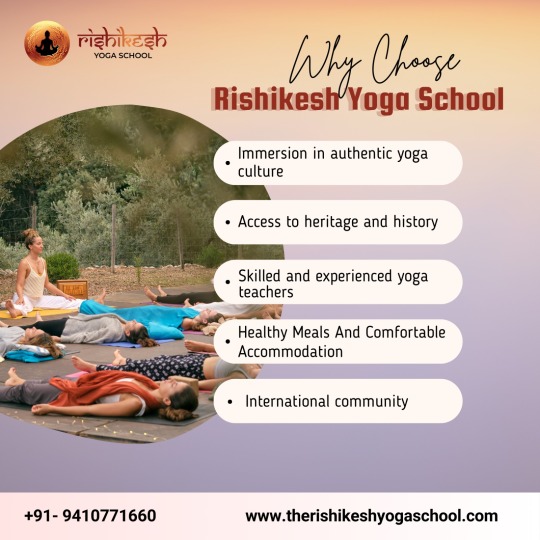
"Discover the magic of Rishikesh Yoga School!
🌟Immerse yourself in the heart of yoga's birthplace, where ancient wisdom meets modern practice. Join us on a transformative journey of self-discovery, healing, and growth. 🙏
𝐂𝐨𝐧𝐭𝐚𝐜𝐭 𝐮𝐬 𝐟𝐨𝐫 𝐦𝐨𝐫𝐞 𝐝𝐞𝐭𝐚𝐢𝐥𝐬:
✉️𝐄𝐦𝐚𝐢𝐥 𝐈𝐃: mailto:[email protected]
📞𝐂𝐚𝐥𝐥/𝐖𝐡𝐚𝐭𝐬𝐀𝐩𝐩: +91-9410771660
#yoga#rishikeshyogaschool#yogainrishikesh#yogateachertraining#meditationinspiration#meditation#yogaJourney#meditationtechniques#yogapose#yogateacher
0 notes
Text

🌟 Elevate Your Life with Yoga Tribex! 🧘♂️✨
Ready to experience the countless benefits of yoga? Look no further than Yoga Tribex, where we're dedicated to helping you unlock your full potential and thrive in mind, body, and spirit.
Join us today!
#yoga#meditation#yogateachertraininprogram#yogateacher#yogaytribex#asana#yogaJourney#meditationtechniques#yogalife#yogapose
0 notes
Photo

Balancing Your Inner Harmony: Chakra Alignment Meditation https://rntozen.com/blog/meditate/balancing-your-inner-harmony-chakra-alignment-meditation/?utm_source=tumblr&utm_medium=RN+To+Zen+Social+Media&utm_campaign=RN+To+Zen+Posts
#ChakraAlignmentMeditation#ChakraBalance#ChakraHealing#EnergyCenters#HolisticWellness#InnerHarmony#MeditationPractice#MeditationTechniques#MindBodySpirit
0 notes
Link
The crown chakra is the highest energy center in the body, located at the top of the head. When this chakra is blocked, it can lead to a range of physical and emotional symptoms. It's important to recognize these symptoms and take action to clear the blockage. Symptoms of a blocked crown chakra can include headaches, confusion, and a lack of spiritual connection. It can also lead to feelings of isolation and disconnection from the world around us. Fortunately, there are many ways to open and balance the crown chakra, from meditation to energy healing. By understanding the symptoms of a blocked crown chakra and taking steps to clear the blockage, we can tap into our highest potential and live a more fulfilling life. Don't let a blocked crown chakra hold you back – explore the solutions available and unlock your full spiritual potential. 🌟🧘🏽♀️🌈1. Understanding the Crown Chakra: An OverviewThe Crown Chakra is the seventh chakra in the human body. It's located at the top of the head and is associated with the color violet. This chakra is responsible for our connection to the universe and our spiritual awareness. 🌟 When the Crown Chakra is balanced, we feel a sense of inner peace and harmony. We're able to connect with our higher selves and the divine. However, when it's blocked, we may experience feelings of disconnection and confusion. 🧘♀️ Meditation, yoga, and mindfulness practices can help to balance the Crown Chakra. Additionally, incorporating violet-colored foods, such as berries and grapes, into our diets can also be beneficial. 🍇 Some signs of an overactive Crown Chakra include feeling disconnected from reality and having a superiority complex. On the other hand, an underactive Crown Chakra can lead to feelings of anxiety and depression. 🤔 It's important to note that the Crown Chakra is just one aspect of our overall energy system. It's essential to work on balancing all of our chakras to achieve optimal health and well-being. 💪2. Common Symptoms of Crown Chakra Blockage Headaches and Migraines Feeling disconnected from spirituality Difficulty in concentration and focus Feeling lost, aimless, or purposeless Depression, anxiety, and mood swings Difficulty in sleeping and insomnia Feeling ungrounded and disconnected from reality Feeling a lack of inspiration and creativity Feeling a lack of self-awareness and self-confidence Feeling a lack of connection with others These symptoms may manifest differently in each individual, but they are all signs of a blockage in the crown chakra. It's important to address these symptoms to restore balance and harmony in the body and mind. 🌟3. The Effects of Crown Chakra Imbalance on Mental HealthWhen the crown chakra is imbalanced, it can lead to various mental health issues. Depression Anxiety Confusion Difficulty concentrating Feelings of isolation These symptoms can be caused by an overactive or underactive crown chakra. Overactive crown chakra can lead to a disconnection from reality and a lack of grounding. Underactive crown chakra can lead to a lack of purpose and direction in life. Healing the crown chakra can be done through meditation, yoga, and energy healing. It's important to seek professional help if symptoms persist. 🧘♀️💆♂️💫4. Techniques for Balancing the Crown Chakra👑 Balancing the Crown Chakra is essential for spiritual growth. Here are some techniques to help you achieve balance: 🧘♀️ Meditation: Sit in a comfortable position, close your eyes, and focus on your breath. Visualize a bright violet light at the top of your head, and imagine it expanding to fill your entire body. 📿 Affirmations: Repeat positive affirmations such as "I am connected to the divine" or "I trust the universe to guide me." Write them down and place them where you can see them daily. 🌳 Nature: Spend time in nature, surrounded by trees, plants, and fresh air. Take deep breaths and feel the energy of the earth and sky. 🎶 Sound Healing: Listen to music or sounds that resonate with the Crown Chakra, such as chanting or singing bowls. Let the vibrations wash over you and bring you into alignment. 🙏 Gratitude: Cultivate a sense of gratitude for all that you have and all that is to come. Focus on the blessings in your life and trust that the universe has your back. 💜 Remember, balancing the Crown Chakra takes time and practice. Be patient with yourself and trust the process. With dedication and commitment, you can achieve greater spiritual awareness and connection.5. The Role of Meditation in Healing Crown Chakra Blockage🧘♀️Meditation can help heal crown chakra blockages by calming the mind and promoting inner peace. 🧠Meditation can also help increase self-awareness and mindfulness, allowing individuals to identify and address blockages. 💆♀️Regular meditation practice can lead to a more balanced and open crown chakra, promoting spiritual growth and connection. 🌟Meditation techniques such as visualization and chanting can also be effective in healing crown chakra blockages. 🙏It is important to approach meditation with intention and consistency in order to see the benefits in healing chakra imbalances.6. Incorporating Yoga and Other Physical Practices for Crown Chakra Alignment🧘♀️ Yoga is a great way to align the crown chakra. Try poses like headstand, lotus, and savasana. 🌿 Incorporate essential oils like frankincense, lavender, and sandalwood for a calming effect. 🍎 Eating foods like blueberries, grapes, and pomegranates can help balance the crown chakra. 🌞 Spend time in nature to connect with the universe and balance the crown chakra. 🌟 Reiki and crystal healing can also aid in crown chakra alignment. 🎶 Listen to calming music or chant "Om" to help balance the crown chakra. 💭 Practice mindfulness and meditation to clear the mind and balance the crown chakra. 🌈 Incorporating these practices can lead to a more balanced and harmonious life.7. The Importance of Seeking Professional Help for Crown Chakra IssuesThe crown chakra is the highest energy center in the body, responsible for spiritual connection and enlightenment. When imbalanced, it can cause physical and emotional issues. Seeking professional help from a qualified practitioner can help balance the crown chakra. 🌟 Professional help can come in many forms, including energy healing, meditation, and yoga. These practices can help align the chakras and promote overall well-being. It's important to find a practitioner who resonates with you and your needs. 🔍 Ignoring crown chakra issues can lead to a lack of purpose, depression, and disconnection from the spiritual realm. Seeking professional help can provide guidance and support in navigating these challenges. 🙏 A qualified practitioner can also provide tools and techniques for maintaining a balanced crown chakra, such as affirmations and visualization exercises. These practices can help prevent future imbalances and promote spiritual growth. 🌱 In summary, seeking professional help for crown chakra issues is crucial for overall well-being and spiritual growth. With the right practitioner and tools, balancing the crown chakra can lead to a deeper connection with the divine and a greater sense of purpose. 🌟 In conclusion, the Crown Chakra is the most important chakra in our body. It connects us to the divine and helps us to achieve spiritual enlightenment. A blocked Crown Chakra can lead to various physical and mental symptoms, such as headaches, anxiety, and depression. To unblock the Crown Chakra, there are several solutions available. Meditation, yoga, and Reiki are powerful tools that can help to balance and heal the Crown Chakra. Additionally, incorporating spiritual practices such as prayer and gratitude can also be beneficial. Remember, a healthy Crown Chakra is essential for a fulfilling and purposeful life. 🙏🧘♀️💜 https://symptomfinder.com/crown-chakra-block-symptoms-solutions/?_unique_id=64877827c4c14
#Uncategorised#CrownChakraBlockage#energyhealing#MeditationTechniques#mindfulnesspractice#spiritualawakening#aiomatic_0
0 notes
Text

Rishikesh is a renowned destination for meditation and yoga practices in India. If you're interested in joining a Meditation Teacher Training Course Real Happiness in Rishikesh, India is a popular school that offers Meditation Teacher Training Courses (TTC).
#learnmeditation#300hourmeditation#meditationteachertraining#indianmeditation#150hourmeditation#meditationtechniques#teachingmethods#teachingmeditation#teachertrainingcourse
1 note
·
View note
Text

Guided 🧘 Meditation is a "Meditation done with the help of a guide". The guide can be a teacher or an instructor. It is the easiest way to enter a state of #deep#meditation and inner peace. It is one of the most powerful ways to eliminate #stress and bring about #positive personal changes.
Have you tried guided meditation🧘? Please leave a comment.
📱WhatsApp: +91-8445144444
🌐 Official link: www.realhappiness.in
📌 Where: Tapovan, Rishikesh, India
#guidedmeditation#meditation#meditationpractice#meditationtechniques#meditationwithnature#meditationteacher
0 notes
Text
What is Meditation - A Beginner’s Guide to Achieving Inner Peace and Well-Being

Practicing yoga for inner peace
In today's fast-paced world, it's easy to get caught up in the constant noise and distractions around us. We're bombarded with information, notifications, and responsibilities, and it can be difficult to find a moment of calm and clarity amidst the chaos.
That's where meditation comes in. Meditation is a practice that has been used for centuries to quiet the mind, reduce stress, and promote overall well-being. But what exactly is meditation, and how can you get started with this powerful practice?
At its core, meditation involves training your mind to focus on a specific object, thought, or activity, with the goal of achieving a state of mental clarity and inner peace. This can be accomplished through a variety of techniques, including deep breathing, visualization, and mindfulness.
Benefits of meditation
The benefits of meditation are numerous and well-documented. Research has shown that regular meditation practice can help reduce stress and anxiety, improve focus and concentration, lower blood pressure, and even boost the immune system.
Some tips to get you started include finding a quiet, comfortable space to meditate, setting a regular meditation schedule, and starting with just a few minutes of meditation per day, gradually increasing the length of your sessions over time.
So, how can you get started with meditation? Our Beginner's Guide to Meditation is the perfect place to start. This comprehensive guide will take you through the basics of meditation, including different techniques and styles, and provide you with practical tips and tricks for getting the most out of your practice.
Whether you're looking to reduce stress, improve your mental health, or simply find a moment of peace in a hectic world, meditation can be a powerful tool. So, why not give it a try? With the help of our Beginner's Guide to Meditation, you'll be on your way to achieving inner peace and well-being in no time.
Read the full article
#BenefitsofMeditation#guidedmeditation#HowtoMeditate#MeditationforBeginners#MeditationRetreats#MeditationTechniques#MindfulnessPractices#SpiritualPractices#TypesofMeditation#YogaandMeditation
0 notes